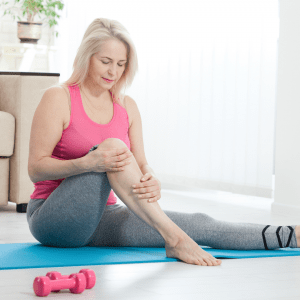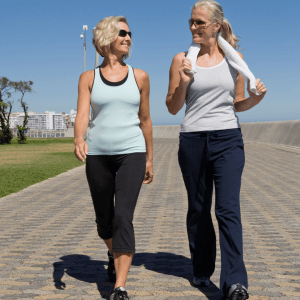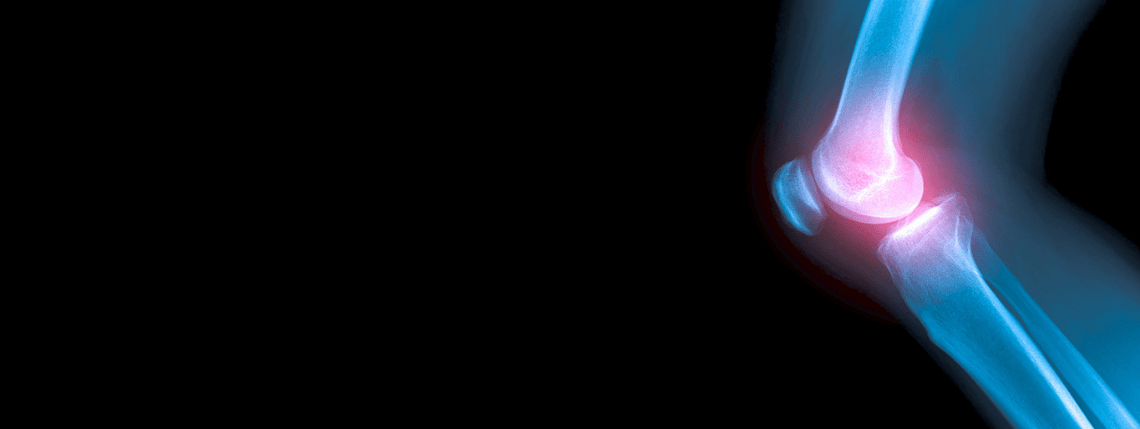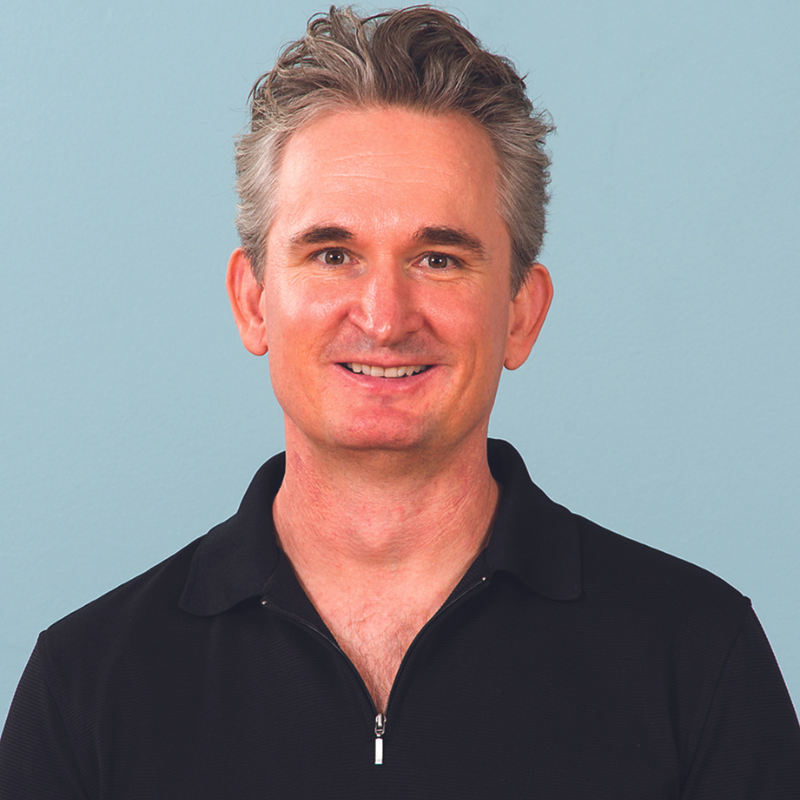Osteoarthritis is the most common form of arthritis affecting nearly 500 million people worldwide. Learn how to help these people reduce their symptoms, exercise better and live more active and pain-free lives with the appropriate application of corrective exercise in this latest blog from Justin Price.
Osteoarthritis affects many people and the success they can achieve when beginning or participating in a program of regular exercise. As a Corrective Exercise Specialist (CES) or fitness professional trained in helping people overcome musculoskeletal limitations, it is important to understand what osteoarthritis is, the impact it can have on your clients’ programs, and what corrective exercise strategies you can recommend to help people alleviate the painful and limiting symptoms of osteoarthritis.
What is Osteoarthritis?
Osteoarthritis (OA) is the most common type of arthritis, especially among older people. It affects the surface layer of cartilage causing bones under the cartilage to rub together, triggering pain, swelling, and loss of motion of the joint. Over time, these changes can affect the bones, tendons, muscle and movement function, and cause other joint issues.1

According to the Center for Disease Control (CDC), 1 in 4 adults suffer from diagnosed arthritis. While there are estimated to be more than 100 types of arthritis, osteoarthritis (OA) affects nearly 500 million people worldwide. 2
Impact of Osteoarthritis
Osteoarthritis can have substantial impact on individuals and their movement. Painful symptoms can be a barrier to physical activity, and inactivity among people with osteoarthritis is associated with conditions such as cardiovascular disease, diabetes, obesity, and functional limitations. Regular physical activity— performed correctly— can be an important way to reduce pain, improve function, and manage symptoms for people with osteoarthritis .3,4 Therefore, clients with osteoarthritis should have corrective exercise strategies incorporated into their movement and exercise programs.
Corrective Exercises for Osteoarthritis
Research shows that improving the alignment and mobility of the body is helpful in preventing the progression of osteoarthritis. 5 As a professional trained in musculoskeletal assessment and corrective exercise program design, you can use your knowledge to observe a client’s alignment issues and recommend corrective exercise strategies that improve alignment and increase mobility.6,7
Increasing mobility to specific areas of the body such as the spine, hips and ankles has been found to help decrease stress throughout the entire system5. As such, your corrective exercises for arthritis should focus on targeting imbalances found in these areas. For example, if you find that a client diagnosed with osteoarthritis has excessive lumbar lordosis (an overly arched lower back) you might recommend they perform self-myofascial release techniques on their hip flexor muscles. Releasing these muscles will reduce the forward pull on their lumbar spine and allow the lumbar spine to flex more easily. You might then subsequently recommend stretches for their hip flexor muscles and lumbar erectors before ultimately introducing strengthening exercises to encourage proper hip extension (e.g., glute or hip bridges) which will further reduce stress to the lumbar spine and promote better long-term function.6,7
Walking is helpful for introducing light aerobic exercise to your osteoarthritic clients’ programs. This activity can also help OA clients manage their weight which is very helpful in reducing their painful symptoms.8 It is important, however, to introduce walking gradually into programs while also coaching clients on correct gait mechanics and addressing any issues you observe. If your clients find walking difficult, water-based exercises are an excellent alternative for introducing aerobic activity at a manageable level.8

Corrective Exercise Contraindications for Osteoarthritis
It is important to consider the following contraindications when introducing clients with osteoarthritis to corrective exercise strategies (i.e., self-myofascial release, stretching and strengthening techniques) to improve their alignment and increase their mobility.
Self-Myofascial Release Techniques (SMR)
- Do not use SMR with clients who have acute rheumatoid arthritis. Rheumatoid arthritis is an autoimmune and inflammatory disease that affects the joints.
- Be conservative using SMR on clients with osteoporosis. Osteoporosis can decrease bone strength increasing the potential risk of broken bones. Therefore, if you do recommend SMR for this population, choose exercises that do not place direct pressure on affected areas. For example, instead of instructing a client to lie on the ground over a tennis ball to massage their upper back, coach them to massage this area while standing by placing the tennis ball between their back and a wall.
- If you are ever in doubt about whether you should use SMR with a certain client, check with their physician first to obtain clearance.6,7
Stretching Techniques
- Use stretching cautiously with clients who have rheumatoid arthritis or osteoporosis.
- If you are ever in doubt about whether you should use stretching with a certain client, check with their physician first to obtain clearance. 6,7
Strengthening Techniques
- Do not try strengthening exercises with clients who have a history of rheumatoid arthritis before clearance has been obtained from a licensed medical professional.
- Use strengthening exercises cautiously and conservatively in those clients with osteoporosis.
- If you are ever in doubt about whether you should use strengthening exercises with a certain client, check with their physician first to obtain clearance. 6,7
As a corrective exercise professional, you are uniquely positioned to help clients with OA by addressing their alignment issues as you introduce them to a program of regular exercise designed to increase mobility and aerobic conditioning. As their painful symptoms subside under your guidance, clients will be more motivated to adhere to their exercise program on an ongoing basis. This means that your ability to help OA clients with alignment and mobility issues will enable them to feel and function better both immediately and long-term.
References:
1Osteoarthritis Action Alliance, 2021, Living Better with Osteoarthritis, accessed December 28, 2021, https://oaaction.unc.edu/individuals/
2Center for Disease Control, 2021, National Statistics, accessed December 28, 2021, https://www.cdc.gov/arthritis/data_statistics/national-statistics.html
3Barbour KE, Helmick CG, Boring M, Brady TJ. Vital Signs: Prevalence of Doctor-Diagnosed Arthritis and Arthritis-Attributable Activity Limitation—United States, 2013–2015. Morbidity and Mortality Weekly Report 2017; 66:246–253.
4Hootman JM, Helmick CG, Barbour KE, Theis KA, Boring MA. Updated projected prevalence of self-reported doctor-diagnosed arthritis and arthritis-attributable activity limitation among US adults, 2015-2040. Arthritis Rheumatol. 2016;68(7):1582–1587.
5Tateuchi, H. Gait- and postural-alignment-related prognostic factors for hip and knee osteoarthritis: Toward the prevention of osteoarthritis progression. Physical Therapy Research. 2019; 22(1): 31–37.
6Price, J. 2018. The BioMechanics Method for Corrective Exercise. Champaign, IL: Human Kinetics.
7Price, J., and M. Bratcher. 2018. The BioMechanics Method Corrective Exercise Specialist Certification Program. 2nd Ed. San Diego, CA: The BioMechanics Press.
8Mayo Clinic, 2021, Exercise Helps Ease Arthritis Pain and Stiffness, accessed December 28, 2021, https://www.mayoclinic.org/diseases-conditions/arthritis/in-depth/arthritis/art-20047971








